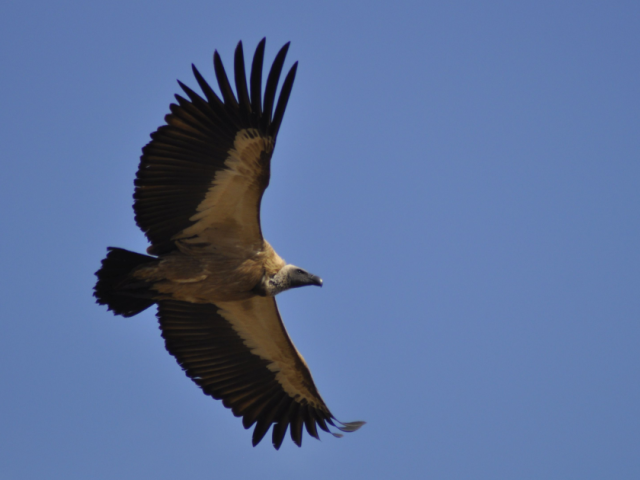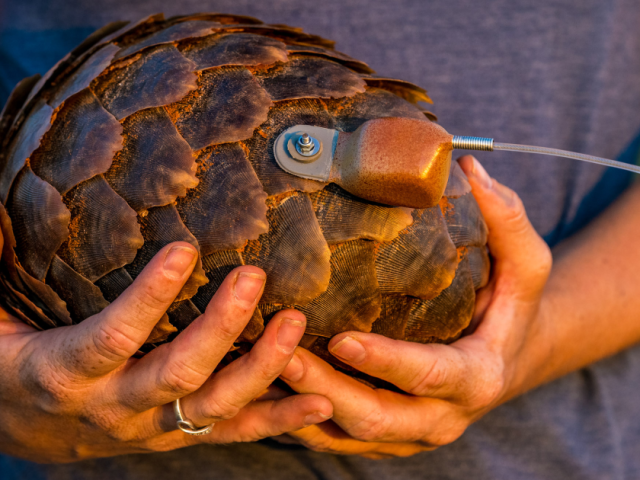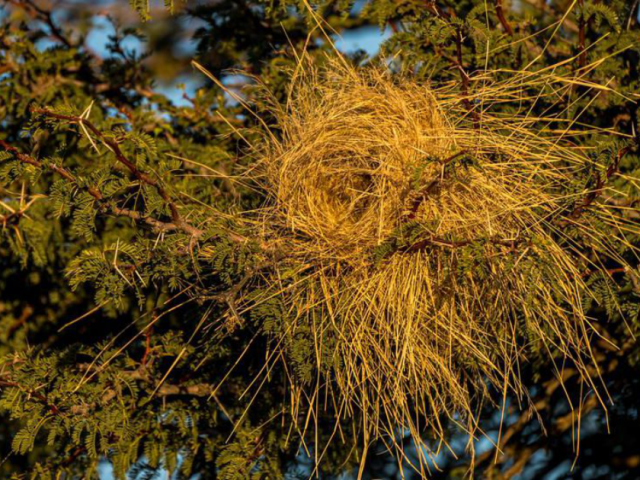Dr Camille Parmesan is a climate change researcher who knows what it feels like to have one’s habitat wither.
She has observed over decades how butterflies, her specialty, can find themselves marooned in an area made inhospitable either by rising heat or because it’s become cropland. But when Donald Trump became president of the United States and pulled out of the 2015 Paris agreement, Parmesan, who served as a lead author on a United Nations climate panel that shared the 2007 Nobel Peace Prize with former Vice President Al Gore, found herself in the crosshairs of the War on Science, together with other researchers. A scythe was taken to science funding, and climate change discourse was censored at the highest levels of government. So, she became a climate change refugee of sorts, and now lives in France, whose president, Emmanuel Macron, offered her a grant and a conducive environment to research biodiversity and climate change.
While she has not changed her own colours in spite of climate change denialism and political headwinds, she is fascinated by species which have hybridised to survive. She is equally interested in the ethical and philosophical challenge that hybrids present to conservationists, some of whom see the solution as killing them off.
Parmesan will be addressing the Oppenheimer Research Conference in Johannesburg later this year, on the topic “Global impacts of climate change on natural systems and consequences for conservation of biodiversity”. She will also give an overview of observed impacts of recent climate change in natural systems stemming from the most recent Intergovernmental Panel on Climate Change 6th Assessment Report, for which she was a coordinating lead author.
Parmesan is an ecologist whose research has focused on understanding how global warming affects the distribution and behaviour of species. She conducted groundbreaking studies that showed how climate change is causing shifts in the ranges of various species, leading to changes in their abundance and interactions with other species. One of her most significant achievements was the documentation of the northward range shifts of butterflies in Europe and North America in response to warming temperatures. Her work provided compelling evidence of the link between climate change and shifts in species distributions.
Interviewed via Zoom on her farm in France, Parmesan was in the midst of packing for a lengthy field-trip to the United States, and apologised that “I’m a bit out of it right now because I’m multitasking way too much.”
We don’t dwell on her policy work on the IPCC report which lists the huge impacts of climate change: Rising temperatures, extreme weather events, rising sea-level, biodiversity loss, food and water insecurity, health pandemics, economic, social and political instability.
But she does emphasise some impacts of climate change, such as the hastening of spring, for example, which makes it hotter, while creating a mismatch between breeding cycles and available food. Sometimes species can’t move fast enough to get ahead of climate change, and vulnerable species such as the polar bear that depend on extreme ecosystems die out. But one way in which they can ensure their long-term survival is to hybridise. She says that “preservation of biodiversity in the face of anthropogenic climate change will require novel forms of management and unconventional measures of ‘success’. Some conservation options bring up ethical issues that question the philosophical foundation of traditional conservation.”
Why does this present a problem to conservationists?
“I think if you if you look at the history of humans and nature, it’s humans wanting to categorise,” she says.
“And if you look at (the father of modern taxonomy Carl) Linnaeus’ early work, it was such a breakthrough because people could now put things into little boxes and have it all make sense. We want to categorise things as male, female, genus, species, whatever it is. And getting us to not do that is fundamentally very, very difficult.”

Parmesan points out that some of the debate around hybrids is a legal question. “I am American, and in the USA, the legal system for protecting species is the Endangered Species Act, and it is very structured around preserving the identity of a species. When you get a hybrid, it creates legal problems. What the hell do we do? And I suspect that’s one reason why when the polar bears started hybridising with grizzlies, the conservation biologists wanted to kill the hybrids. Probably it’s because we were trying to get the polar bear protected, and if it’s hybridising with grizzlies, it would muck up the legal ability to protect it.
“But apart from the legal issue, ethically, I don’t think they should do anything. It’s just impossible to prevent anyway. And if you do start killing things off and trying to create these artificial boundaries where nature is trying to break those boundaries, you risk losing genes out of the big pool. Just think of everything as a mass of genes, and don’t tie them to species. If you go killing off bits, you’re losing genes that may be essential for helping us get biodiversity back after we stabilise climate.
“But if you don’t think about stabilising climate, then there’s no point in doing anything. So, I have to think, we will get this under control. And when we do that, we want the genetic diversity out there so that natural selection can again reform what we think of as species now.”
Which brings the discussion back to the polar bear.
“If you look at their phylogenetics going back hundreds of thousands of years, what you’ll see is that polar bears have disappeared multiple times during warm periods, and yet they always reform, and they reform really quickly. The geneticists have found populations where you’ve got what looks like a grizzly bear population, but 40% of the genes are polar bear. And you’ve got polar bear populations that are the reverse. They look like pure polar bears, but you look into the genetics, and, gee, a lot of the genes are actually associated with grizzly bears.
“So, what they think happened is that during these warm periods, you get hybridisations. You lose the phenotype of the polar bear. Everything looks like a grizzly bear. You do the fossil record, it looks like you only have grizzlies, and you’ve lost the polar bears. But when the ice starts reforming and you start getting that habitat back, the polar bear is able to re-emerge very quickly because of having genes in the grizzly bear. And if you had not allowed hybridisation somehow, then it could take a million years to get the polar bears back. Whereas in fact, it’s only taken a few thousand years. I use that as the real life example that hybridisation saved the polar bear. It’s why we still have it now.
Parmesan notes that the displacement of temperature bands will extinguish habitats and species “in the natural course of things” and that it is important to “jump ahead of that process and say, okay, well, what will keep a foothold, in spite of what we can already see happening?”
Evidently these are not quick processes, so what timeframes is she talking about, cosmic or human?
“If the climate doesn’t stabilise in a few thousand years, we’re going to have a lot more extinction,” says Parmesan. “If it can stabilise in the next, say, two to three thousand years, then things can hang on in small little pockets and hopefully come back. But if it goes on much longer, then we really are going to fundamentally lose the diversity that we’ve got.
“That’s why,” says Parmesan in a rare flash of frustration, “I’m so upset with the lack of action internationally.”
And now she’s on a roll.
“One thing that got me so upset with the government approval session is, if you look at the climate scenarios, all of them have greenhouse gas emissions increasing and temperature going up, except for one, which has temperature going up and then stabilising and even starting to come down. That one scenario is the only one where we stabilise global population quickly, by 2050, and start bringing population numbers down. And several governments – it wasn’t just one – absolutely didn’t want anything about human population stabilisation in the Summary for Policymakers.
“I’m upset both by the scientists for not just digging in our heels, and by the governments which say that emissions are all about consumption and have nothing to do with the number of people. That drives me crazy because it’s the number of people times consumption which makes up the emissions. How can you take away half of the equation and think that you’ve got your solution? You cannot take the number of people in the world out of the equation. It makes me very cynical about whether we’re ever going to get this under control. And that’s when I start getting these Armageddon-type feelings.”

Where she can exert some control, however, is on her farm in France. “It’s basically a grassland,” she says, “which if it wasn’t grazed or mown would be a forest”. This largely gets taken care of by cows, which belong to a cattle farmer who brings his animals in a couple of times a year for a few weeks. Transhumance, which Parmesan advocates for to combat climate change, in action.
“Mowing and grazing keeps out the woody stuff, and what’s left is this beautiful native meadow, which is full of native flowers. There are also about 30 species of butterfly, and about half a dozen of them are rare,” she says.
Parmesan sees this as proof “that in some systems, management is essential to conservation. If you don’t have the big grazers, things start getting too woody and then the grass can’t grow. There’s this big push internationally against meat eating, and I do totally agree we need to lower our consumption of meat, but there are habitats where to raise meat is actually the best use of the habitat, both for humans and for conservation.
“You need the cows. And even when you cut the hay, it’s for feeding the cows in the wintertime, so it’s still for the purpose of raising meat. If you didn’t have that, this whole thing would be woodland, and you’d lose all of the meadow species. We would lose a hell of a lot of biodiversity if we stopped raising the meat. This traditional way of raising meat, which you have in Europe in particular, works well from a conservation point of view.”
“People are trying to do black and white. You’re either for the planet and you’re vegan, or you’re eating meat and you’re terrible. It’s not so black and white. We need to lower our consumption of meat, but it doesn’t have to go to zero. It just needs to be at a lower level that is more sustainable, in the right places, rather than doing it in places that are better for, say, cropland or for biodiversity.”
Parmesan’s sense of optimism bounces back as we wrap up. “Most systems are going to be more or less okay,” she says. It’ll just take a few thousand years, and a bit of mixing and matching.
Dr Camille Parmesan will be addressing the Oppenheimer Research Conference which takes place in Midrand, Gauteng, from October 9th-11th, on the topic topic “Global impacts of climate change on natural systems and consequences for conservation of biodiversity”.
Author
- Tracking the Shangani Wanderer - June 18, 2025
- Rescue, rehabilitate, release: tracking the comeback of South Africa’s pangolins - June 18, 2025
- Fewer weavers, fewer homes: why nest builders matter in the Kalahari - June 17, 2025
Additional News
Pangolins are elusive and heavily trafficked. At Tswalu, researchers are working to uncover their secrets and aid conservation.
Declining Sparrow-Weavers may threaten other birds that rely on their old nests for shelter.





